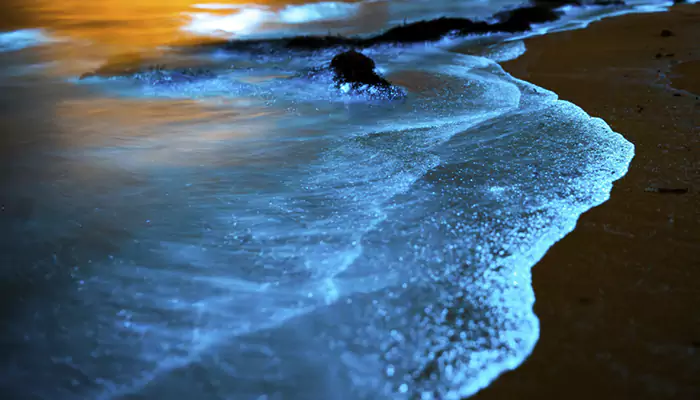Slow Evolution in Deep-Sea Creatures: Adaptations to Extreme Environments
The deep sea, with its inky darkness and crushing pressures, remains one of Earth's most mysterious frontiers. It is a realm where few creatures dare to venture, yet those that do have evolved in remarkable ways to survive and thrive. The slow evolution of deep-sea creatures showcases a fascinating array of adaptations to extreme environments, revealing the incredible resilience of life.
- Elisa Ghosh
- 22 May, 2025
- 2 mins ago

Slow Evolution in Deep-Sea Creatures: Adaptations to Extreme Environments
The deep sea, with its inky darkness and crushing pressures, remains one of Earth's most mysterious frontiers. It is a realm where few creatures dare to venture, yet those that do have evolved in remarkable ways to survive and thrive. The slow evolution of deep-sea creatures showcases a fascinating array of adaptations to extreme environments, revealing the incredible resilience of life.
The Abyss: A Hostile Habitat
The deep sea begins at around 200 metres below the surface and extends to the ocean floor, which can plunge to depths of over 11,000 metres. This zone is characterised by perpetual darkness, freezing temperatures, and immense pressures. The conditions are so harsh that the organisms living here have had to develop unique adaptations to survive.
Bioluminescence: Nature's Night Light
One of the most striking adaptations is bioluminescence. Many deep-sea creatures, from tiny plankton to giant squid, produce their own light. This bioluminescence serves multiple purposes: it can attract prey, confuse predators, or help individuals find mates. The anglerfish, for instance, uses a bioluminescent lure to draw unsuspecting prey close enough to snatch.

Extreme Pressure: Tough Bodies and Slow Metabolisms
The pressure in the deep sea is immense, reaching over 1,000 times the atmospheric pressure at sea level. To withstand this, deep-sea creatures often have flexible, gelatinous bodies that resist compression. Additionally, their metabolisms are incredibly slow, conserving energy in an environment where food is scarce. The Greenland shark, one of the deep-sea's most mysterious residents, exemplifies this slow pace of life. These sharks can live for centuries, with their sluggish metabolism contributing to their extraordinary longevity.
Camouflage and Transparency
In the absence of light, many deep-sea creatures have evolved to be masters of camouflage. Some are transparent, blending seamlessly into their surroundings to avoid predators. Others, like the deep-sea dragonfish, have light-absorbing skin that renders them nearly invisible in the dark waters. These adaptations are crucial for both predator and prey in the deep sea's eternal night.
Feeding Strategies: Opportunistic and Adaptable
Food is sparse in the deep sea, and many creatures have adapted by becoming opportunistic feeders. The gulper eel, with its enormous mouth and expandable stomach, can consume prey much larger than itself. Others rely on "marine snow", a constant drizzle of organic matter falling from the upper layers of the ocean. This detritus provides a critical food source for many deep-sea organisms.
Survival Through Cooperation
Some deep-sea creatures have developed symbiotic partnerships to survive. The yeti crab, found near hydrothermal vents, cultivates bacteria on its hairy claws. These bacteria convert the chemicals from the vents into food, which the crab then consumes. Such partnerships are vital in the nutrient-poor environment of the deep sea.
Evolution at a Glacial Pace
The extreme conditions of the deep-sea result in a slower pace of evolution compared to shallower waters. The isolation and stability of these environments mean that deep-sea species have had millennia to perfect their adaptations. This slow evolutionary process has led to the development of highly specialised traits that are finely tuned to the deep sea's unique challenges.
The slow evolution of deep-sea creatures provides a fascinating window into the ingenuity of nature. These adaptations underscore the remarkable ways in which life can endure and flourish under extreme conditions. We should always appreciate the resilience and diversity of life on our planet. As scientists continue to explore these hidden depths, the deep sea remains a source of wonder and a testament to the endless adaptability of life.










